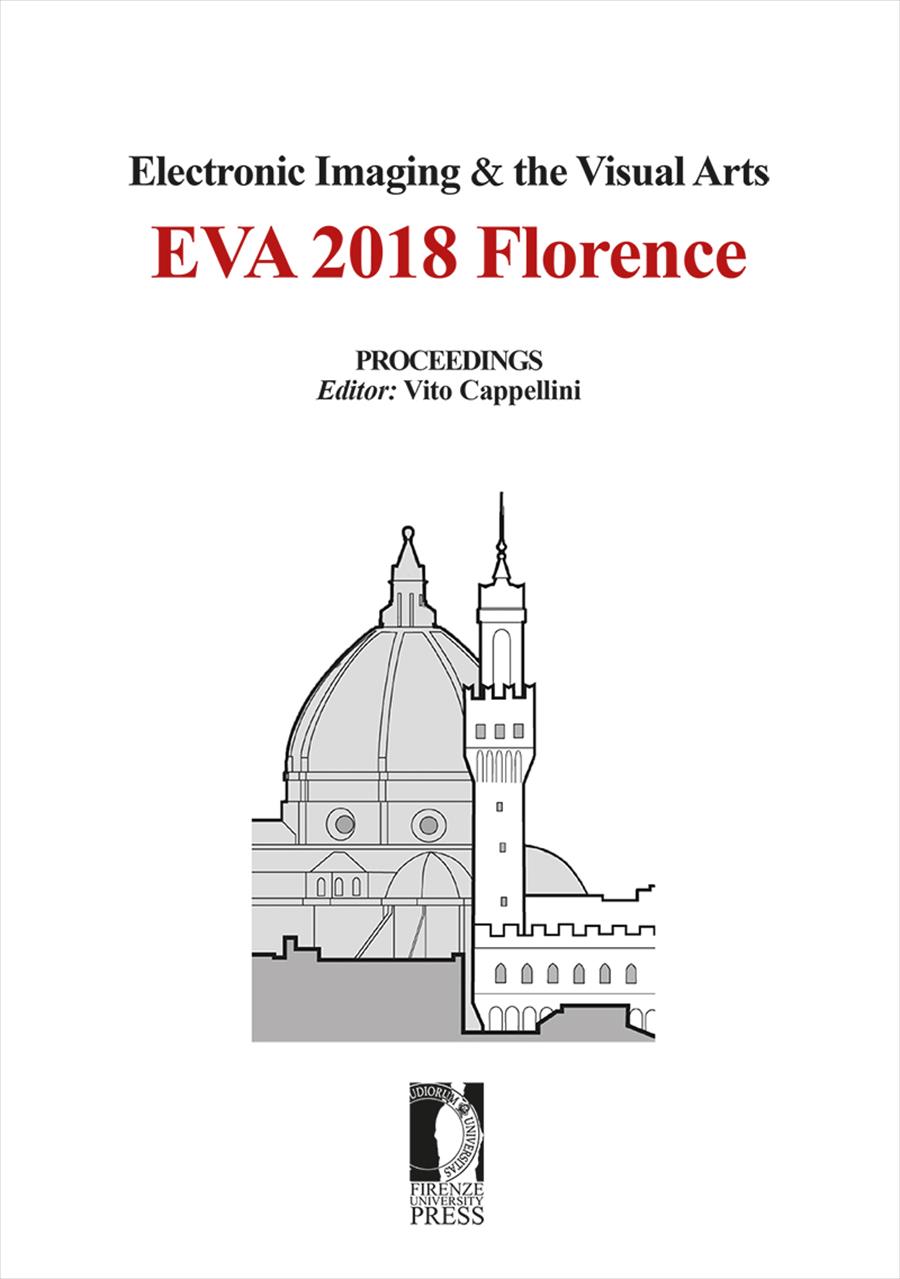- Electronic Imaging & the Visual Arts. EVA 2018 Florence
- Edited by Vito Cappellini
A Scientific Method for the Attribution of Paintings with Application to Leonardo’s Mona Lisa Twins
- John Fredrich Asmus
- Vadim Parfenov
- © 2018 Author(s) |
- CC BY 4.0
- DOI: 10.36253/978-88-6453-707-8.10
- Keywords:
- Paintings,
- Attribution,
- Leonardo,
University of California San Diego, United States
St. Petersburg Electrotechnical University, Russian Federation
- B. Mandelbrot, “The fractal geometry of nature”, W. H. Freeman, New York, NY, 1982.
- S. Lyu, D. Rickmore, and H. Farid, “A digital technique for art authentication”, Proceedings of the National Academy of Sciences. 101 (49), pp. 17006–17010, 2004.
- M. Shahram, D. G. Stork, and D. Donoho, “Recovering layers of brushstrokes through statistical analysis of color and shape: An application to Van Gogh`s Self-portrait with grey fell hat”, in Computer image analysis in the study of art, D. G. Stork and J. Coddington, eds., 6810, pp. 68100D–1–8, SPIE/IS&T, Bellingham, WA, 2008.
- S. Jafarpour, G. Polatkan, E. Brevdo, S. Hughes, A. Brasoveanu, and I. Daubechies, “Stylistic Analysis of Paintings Using Wavelets and Machine Learning” // European Signal Processing Conference (EUSIPCO), 2009.
- Friedman T., Lurie D. J., Shalom A. “Authentication of Rembrandt`s Self-portraits through the use of facial aging analysis” // The Israel Medicine Association Journal. 2012.Vol. 14, P. 591–594.
- Clark K. “Leonardo da Vinci” / Cambridge: Univ. Press. 1952.
- Pedretti C. “Leonardo: A Study in Chronology and Style” / Berkeley: Univ. of Cal. Press. 1973.
- Asmus J. F. “Computer Image Studies of Rembrandt Self Portraits” //Human Vision III. 1992. Vol.1666, P.436-445.
- Asmus J. F. “Spectral and Spatial Statistics of Raphael Paintings” // Applications of Digital Image Processing XVII. 1994 DOI: 10.1117/12.186550
- Átila S. “A Jovem Mona Lisa e outras questões curiosas na História da Arte” / Rio de Janeiro. 2013.
- Lorusso S., Natali A. “Mona Lisa: a comparative evaluation of the different versions and their copies” // Conservation science and Cultural Heritage. 2015. Vol 15. P. 57-84.
- “Leonardo’s Earlier Mona Lisa”. 2nd edition. Zurich. 2015.
- G. Vasari. “The Lives of the Most Eminent Painters, Sculptors, and Architects”. London: Macmillan and Co. Ld. & Medici Society 1912 – 1914.
- Asmus J.F., Bernstein R., Dave J.V., Myers H.J. “Computer enhancement of the Mona Lisa” // Perspectives in Computing. 1987. Vol. 7, P. 11-22.
- Asmus J. F. “Computer Studies of the Isleworth and Louvre Mona Lisas" // Optical Engineering. 1989. Vol. 28, No. 7. Р. 800–804.
- “Kunstkritische Studien über italienische Malerei“. Leipzig. 1890-1893. Bd. 1-3.
- ”A Corpus of Rembrandt Paintings IV. Self-portraits”. Dordrecht, 2015.
Chapter Information
Chapter Title
A Scientific Method for the Attribution of Paintings with Application to Leonardo’s Mona Lisa Twins
Authors
John Fredrich Asmus, Vadim Parfenov
Language
English
DOI
10.36253/978-88-6453-707-8.10
Peer Reviewed
Publication Year
2018
Copyright Information
© 2018 Author(s)
Content License
Metadata License
Bibliographic Information
Book Title
Electronic Imaging & the Visual Arts. EVA 2018 Florence
Book Subtitle
Florence (9-10 May 2018)
Editors
Vito Cappellini
Peer Reviewed
Number of Pages
200
Publication Year
2018
Copyright Information
© 2018 Author(s)
Content License
Metadata License
Publisher Name
Firenze University Press
DOI
10.36253/978-88-6453-707-8
ISBN Print
978-88-6453-706-1
eISBN (pdf)
978-88-6453-707-8
eISBN (xml)
978-88-9273-104-2
Series Title
Proceedings e report
Series ISSN
2704-601X
Series E-ISSN
2704-5846
